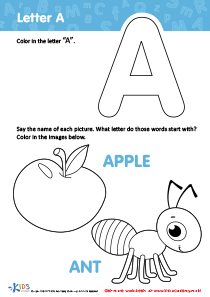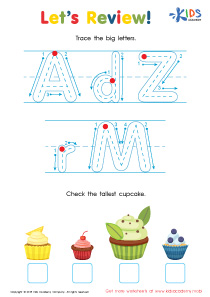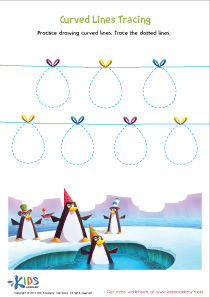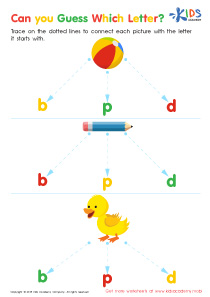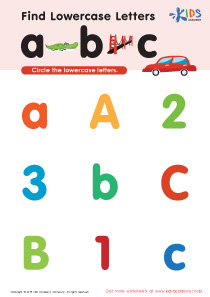Normal Missing Letters Worksheets for Ages 4-5
1 filtered results
-
From - To
Introducing our Normal Missing Letters Worksheets, meticulously designed for the curious minds of children Ages 4-5. These engaging worksheets are crafted to nurture early literacy skills, focusing on the alphabets in the most interactive way. Each page is filled with fun and challenging exercises that prompt young learners to identify and fill in the missing letters, enhancing their understanding of alphabetical order and letter recognition. Perfect for both classroom and home settings, these worksheets offer a solid foundation in early reading skills. Dive into our Normal Missing Letters collection and watch your child embark on a delightful journey of learning and discovery. Ideal for ages 4-5, these worksheets are not just educational tools but gateways to a world of linguistic exploration.
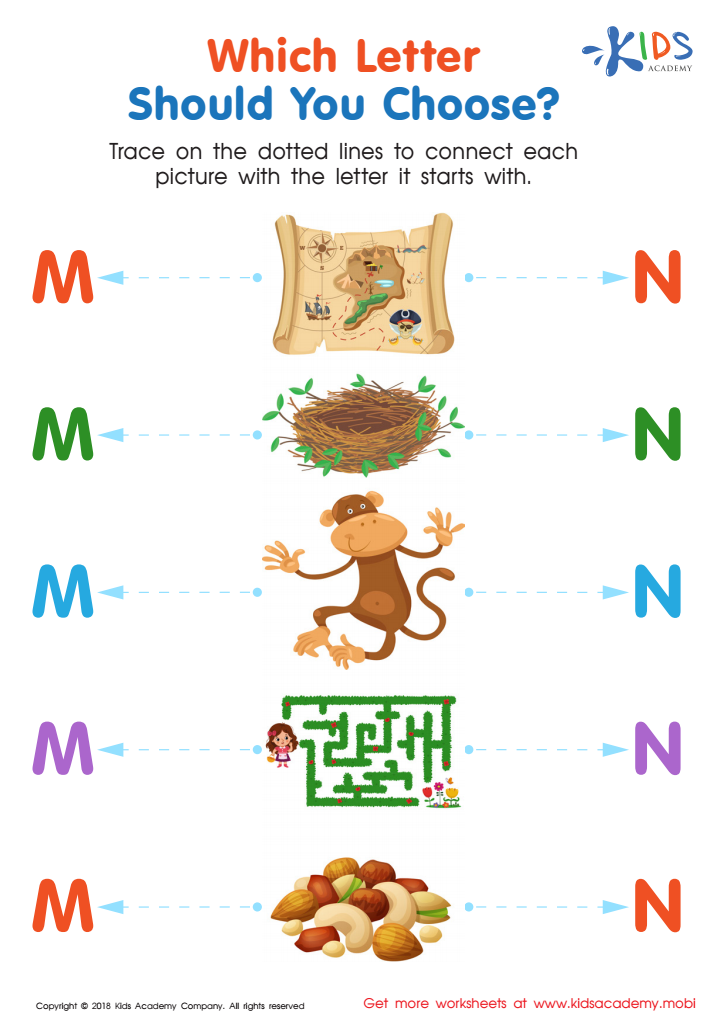

Which Letter Should you Choose? Worksheet
Normal Missing Letters worksheets designed specifically for ages 4-5 play a crucial role in early childhood education by seamlessly integrating fun with learning. These worksheets are not only engaging but also significantly beneficial in enhancing the foundational language skills of young learners. Here's why they are so useful:
-
Cognitive Development: At ages 4-5, children are at a critical stage of cognitive development. Normal Missing Letters worksheets challenge their minds, encouraging them to think critically as they analyze and determine which letters are missing. This process boosts cognitive abilities, including memory and problem-solving skills.
-
Alphabet Recognition: By working with these worksheets, children improve their ability to recognize different letters of the alphabet. This recognition is essential for reading and writing fluency, as it lays the foundation for these crucial skills.
-
Handwriting Practice: Completing Normal Missing Letters worksheets gives young learners the opportunity to practice writing letters. This not only improves their handwriting but also reinforces their ability to recall and form letters, further solidifying their learning.
-
Attention to Detail: To identify the missing letters, children must pay close attention to the sequence of letters. This attention to detail is a valuable skill that transcends academics, aiding in their overall development.
-
Confidence Building: Successfully identifying and filling in the missing letters provides a sense of accomplishment. This boosts their confidence, encouraging a positive attitude towards learning.
In conclusion, Normal Missing Letters worksheets for ages 4-5 are an excellent educational tool that supports early literacy skills, cognitive development, and fosters a love for learning in a fun and engaging way.
 Assign to the classroom
Assign to the classroom

